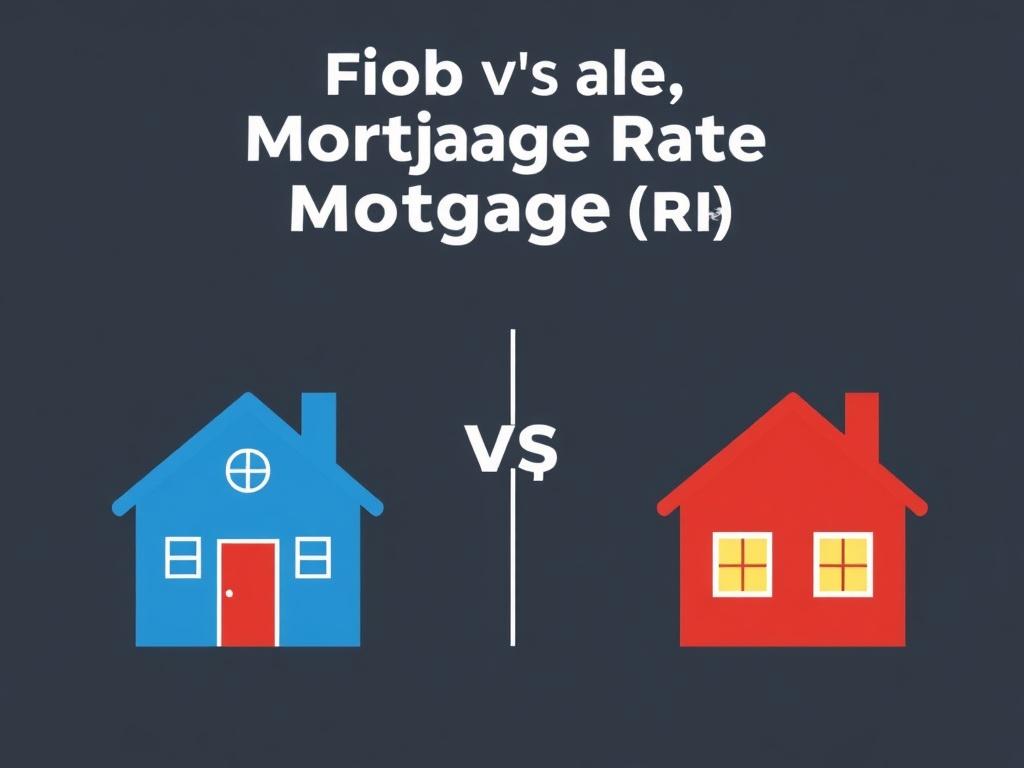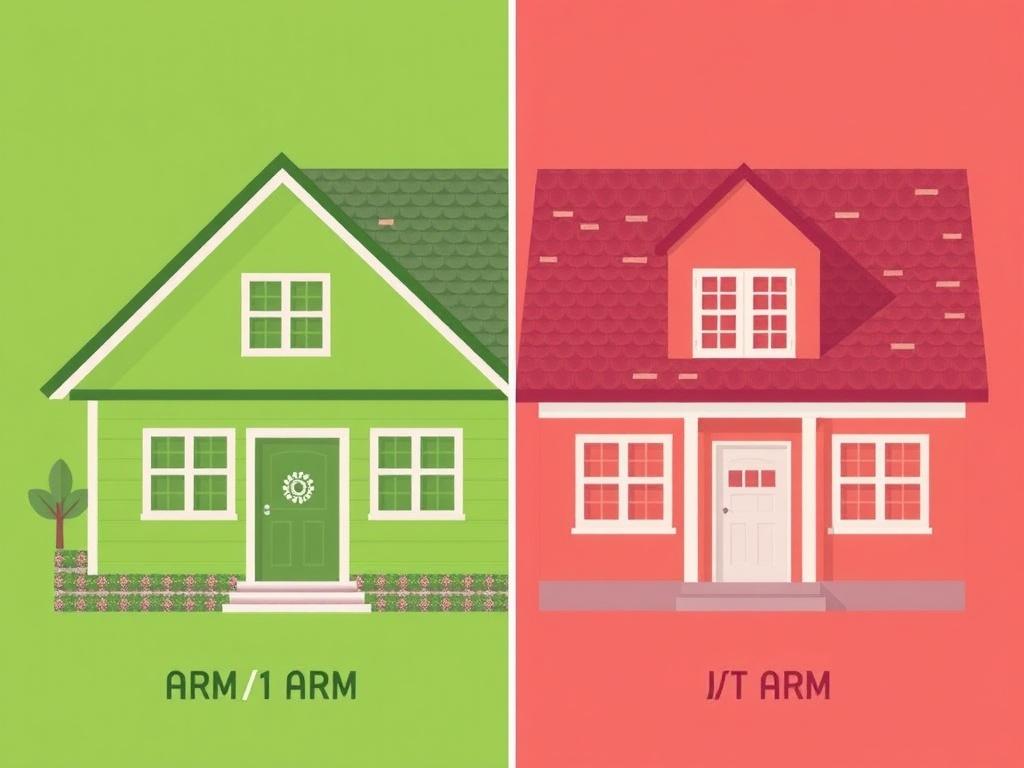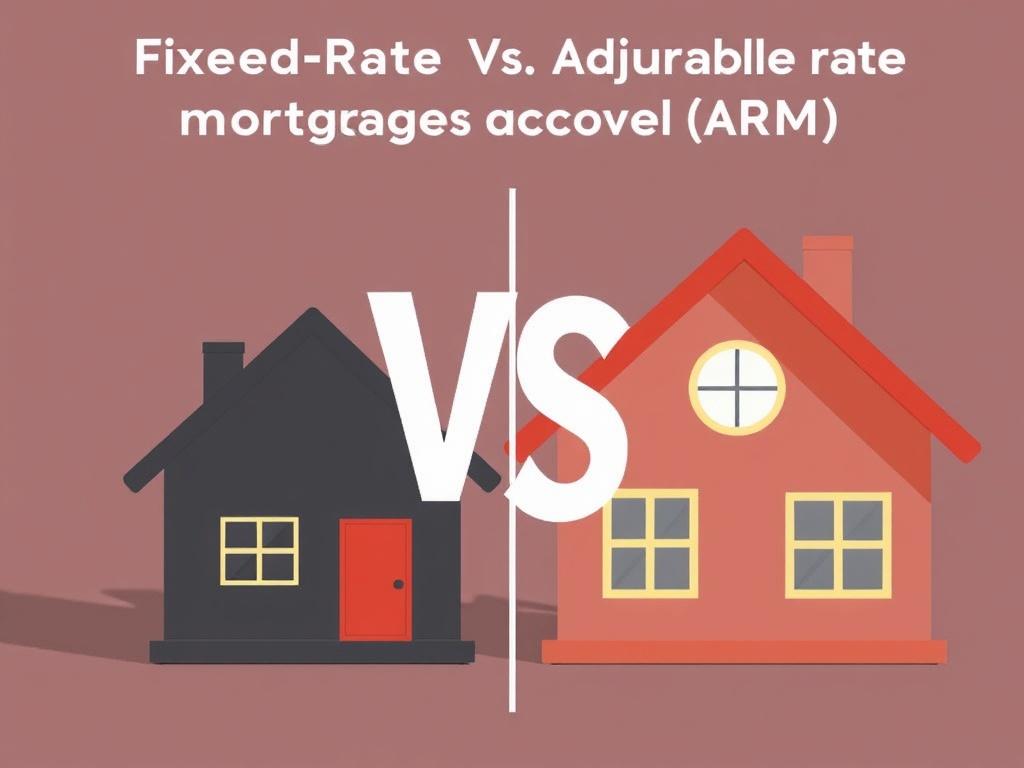SQLITE NOT INSTALLED
When it comes to buying a home, one of the biggest decisions you’ll face is choosing the right mortgage. Two popular options are the fixed-rate mortgage and the adjustable-rate mortgage (ARM). Both have their pros and cons, and understanding how they work can help you make a choice that aligns with your financial goals and lifestyle. In this article, we’ll break down the differences between a fixed-rate mortgage and an adjustable-rate mortgage, explore the benefits and risks of each, and help you understand which might be the best fit for you.
Содержание
What Is a Fixed-Rate Mortgage?
A fixed-rate mortgage is a home loan with an interest rate that remains the same for the entire term of the loan, typically 15, 20, or 30 years. This means your monthly mortgage payment stays consistent, making it easier to budget over time. Many people are drawn to fixed-rate mortgages because of this predictability.
With a fixed-rate mortgage, your payment includes both principal and interest, and it never changes regardless of market fluctuations. This stability is especially valuable in times of rising interest rates.
Key Features of Fixed-Rate Mortgages
- Stable interest rate: The interest rate is locked in when you take out the mortgage.
- Consistent monthly payments: Easier to budget since payments don’t fluctuate.
- Long-term planning: Best for those planning to stay in their home for a long time.
- Higher initial rates: Typically starts higher than initial ARM rates.
What Is an Adjustable-Rate Mortgage (ARM)?

An adjustable-rate mortgage, often abbreviated as ARM, starts with a fixed interest rate for a set initial period — often 3, 5, 7, or 10 years — and then the rate adjusts periodically based on market interest rates. After the initial fixed period, your mortgage rate can go up or down depending on economic factors and the index to which your loan is tied.
Because the initial rate is often lower than that of a fixed-rate mortgage, ARMs can be appealing to buyers who plan to sell or refinance before the adjustable period begins. However, the uncertainty of changing payments is something to consider seriously.
Key Features of Adjustable-Rate Mortgages
- Lower initial interest rate: Typically cheaper at the start compared to fixed-rate mortgages.
- Rate adjustment period: Interest rate changes periodically, usually annually, after the initial fixed period.
- Potential for payment changes: Monthly payments can increase or decrease based on market rates.
- Caps on adjustments: Limits on how much the rate or payments can increase over time.
Breaking Down the Pros and Cons: Fixed-Rate vs. Adjustable-Rate Mortgages
Choosing between a fixed-rate mortgage and an adjustable-rate mortgage can feel overwhelming. To help clarify, here is a detailed comparison of their advantages and disadvantages.
| Mortgage Type | Pros | Cons |
|---|---|---|
| Fixed-Rate Mortgage |
|
|
| Adjustable-Rate Mortgage (ARM) |
|
|
Breaking Down the Adjustable-Rate Mortgage: How Do ARMs Work?

To better understand adjustable-rate mortgages, it’s important to know the different components that determine how your interest rate is calculated after the initial fixed period.
Initial Fixed-Rate Period
Most ARMs start with a fixed interest rate for the first few years, such as 5/1 ARM or 7/1 ARM. The first number indicates the length of the fixed period (5 or 7 years), and the second number specifies how often the rate can adjust after that (once per year).
Index and Margin
After the fixed period ends, your mortgage interest rate adjusts based on two factors:
- Index: This is a benchmark interest rate, such as the U.S. Treasury rate or LIBOR, that fluctuates with the market.
- Margin: This is a fixed percentage added by your lender to the index.
Your rate becomes: Index rate + Margin. For example, if the index is 3% and your margin is 2.5%, your new rate would be 5.5%.
Adjustment Caps
ARMs usually have caps that limit how much the interest rate and payments can increase each adjustment period and over the life of the loan, helping protect you from extreme payment shocks.
Example of How an ARM Works
Imagine you have a 5/1 ARM with a 3% initial rate, a margin of 2.5%, and an index rate that starts at 2.75%. Your initial rate is fixed at 3% for five years. After five years, the rate adjusts annually:
- Year 6: Index rises to 3.5%. New rate = 3.5% + 2.5% = 6%, capped to a 2% increase from initial, so max 5% allowed.
- Payments increase accordingly.
- If index falls, your rate would decrease, but never below initial fixed rate, depending on terms.
Who Should Consider a Fixed-Rate Mortgage?
If you value stability and predictability, a fixed-rate mortgage is an excellent choice. Here are some scenarios where it might be suitable:
- Long-Term Homeowners: If you plan to stay in your home for a decade or more, locking in a consistent rate protects you from future interest hikes.
- Budget Conscious: When your monthly budget is tight and you need predictable payments, fixed-rate mortgages offer peace of mind.
- Risk-Averse Borrowers: If you dislike uncertainty, choosing a fixed-rate mortgage eliminates surprises in your mortgage costs.
Who Might Benefit from an Adjustable-Rate Mortgage?
An adjustable-rate mortgage can be advantageous for certain buyers, including:
- Short-Term Homeowners: If you expect to sell or refinance within the initial fixed period (3 to 10 years), you can take advantage of lower initial rates.
- Those Expecting Rising Incomes: If you anticipate your income to increase significantly, you might handle potential payment rises after the adjustment period.
- Market Savvy Borrowers: People who are comfortable with some risk and want the possibility to benefit from falling interest rates.
Common Myths About Fixed-Rate and Adjustable-Rate Mortgages
There’s plenty of confusion out there about fixed-rate versus adjustable-rate mortgages. Let’s bust some common myths:
Myth 1: ARMs Always Lead to Higher Payments
Not necessarily. The payment fluctuations depend on market interest rates. If rates drop, your payments can go down with an ARM, unlike a fixed-rate mortgage where payments stay the same regardless.
Myth 2: Fixed-Rate Mortgages Are Always More Expensive
While fixed-rate loans usually start with higher interest, their consistent nature can save money if interest rates rise over your loan’s life.
Myth 3: ARMs Are Only for Risk Takers
Though ARMs do have more uncertainties, they can be suitable for cautious borrowers if they fully understand the terms and plan accordingly.
Questions to Ask Before Choosing a Mortgage

Before signing on the dotted line, consider asking yourself and your lender the following:
- How long do I plan to stay in this home?
- What is the difference in the monthly payments between fixed-rate and ARM options?
- What are the exact terms of the adjustment period, including caps and margins?
- What might happen to my payments if interest rates rise by a certain amount (e.g., 1%, 3%)?
- Are there prepayment penalties or opportunities to refinance in the future?
- What is my current financial situation, and can I handle payment fluctuations?
How to Calculate Which Mortgage Is Better for You
To decide between a fixed-rate mortgage and an adjustable-rate mortgage, consider running some numbers based on your expected time in the home and possible interest rate scenarios.
Here’s a simplified way to approach it:
| Factor | Fixed-Rate Mortgage | Adjustable-Rate Mortgage (ARM) |
|---|---|---|
| Initial Interest Rate | Usually higher | Usually lower |
| Payment Stability | Very stable | Stable initially, then variable |
| Risk of Payment Increase | None | Present after initial fixed period |
| Best for Long-Term | Yes | No, better for shorter ownership |
| Potential Savings Upfront | No | Yes |
If you plan to own the home beyond the ARM’s fixed-rate period, calculate what your payments might look like after adjustments. If you plan to sell sooner, the lower initial rate might lead to savings overall.
Tips for Choosing the Right Mortgage
- Assess your financial comfort: How much uncertainty can you handle in your monthly payments?
- Calculate your break-even timeline: Consider when an ARM’s lower initial rate advantage disappears.
- Read the fine print: Understand ARM terms including caps, margins, and adjustment intervals.
- Consult a mortgage advisor: Getting professional help can clarify which option best suits your needs.
Final Thoughts on Fixed-Rate vs. Adjustable-Rate Mortgages (ARM)
Choosing between a fixed-rate mortgage and an adjustable-rate mortgage is a significant decision that affects your finances and lifestyle for years to come. Fixed-rate mortgages offer peace of mind with predictable payments and protection from rising interest rates, making them a great choice for long-term homeowners who want stability. On the other hand, adjustable-rate mortgages can provide lower initial rates and potential savings, especially if you plan to move or refinance before the rates adjust. However, the uncertainty and possible payment increases mean ARMs require a bit more financial savvy and risk tolerance. Ultimately, understanding the key differences, asking the right questions, and carefully considering your personal circumstances will guide you to the mortgage that fits your unique situation best. Remember, this isn’t just about interest rates—it’s about choosing a path that supports your homeownership dreams comfortably and confidently.
Опубликовано: 23 July 2025 Кредитрон – блог о кредитах, финансах и прочих реверансах
Кредитрон – блог о кредитах, финансах и прочих реверансах

